The idea of bugging out to the wilderness is not new. It’s an idea shared by many, and with so much untouched national park land, national forests, and other public lands, these places are destinations imagined by many.
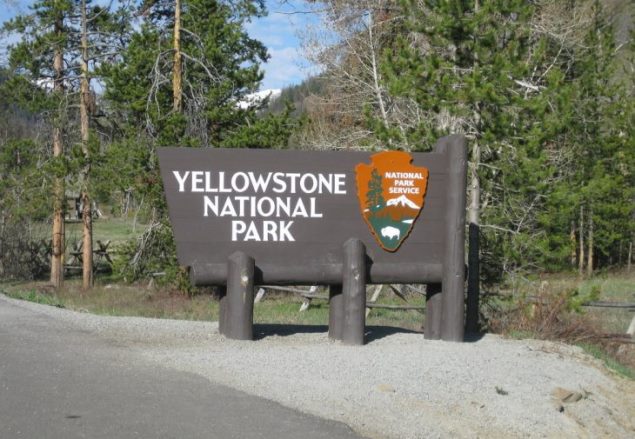
National Park Bug Out Imagined
The leather on your boots squeaks as you creep through the grove. Your eyes scan between the gnarled oaks, the snarling hunger reminds you of what you’re looking for. Glittering sunlight washes over the woods, giving everything a gold-dipped shimmer. The mud at your feet holds a set of tracks, they guide you closer to your prize. You’ve been wandering this area for the past two days, only finding rotting gut piles and coyote-gnawed bones. Now the frustration and fatigue are starting to get to you. Normally the empty, quiet stillness of your forest hike would calm your nerves, but today it only makes you angry.
A glimmer of motion catches your attention, something brown, something big. You slowly shuffle towards a tree for cover.
Your foot crushes a single twig, with a spontaneous clamor a deer gallops out of the oaks and disappears before you can even lift your rifle.
You wait a moment, hoping for another chance. One, two, three, and four gunshots ring out from not too far away. Adding a knot of fear to the already matted ball of hunger in your gut.
You were never alone.
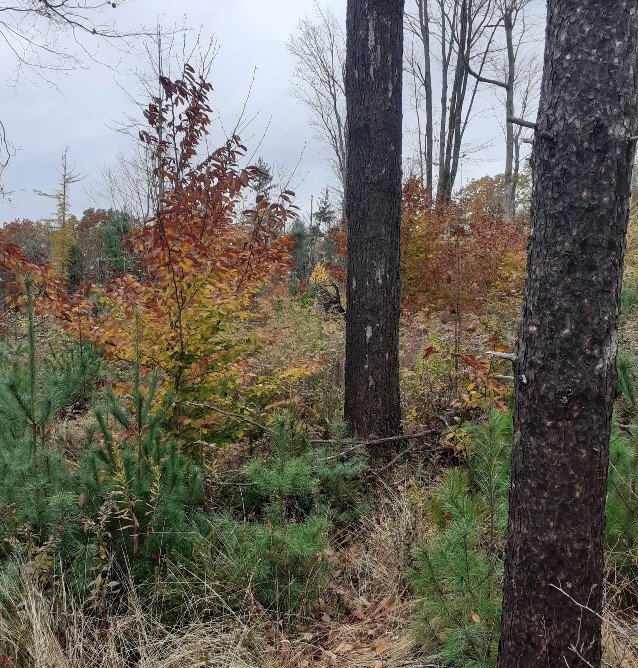
This isn’t the story that we tell ourselves when we think that in the event of societal collapse, “I’ll just bug out to the woods.” We just assume that once we escape the city limits that there will be endless resources and plentiful game waiting for us. Among other concerns, (which I’ll go into more detail about later), not every piece of land is ideal for this purpose. Between everything that will be going on and the amount of pandemonium that fleeing the cities will contain, adding learning about a brand-new area is not necessarily the wisest decision.
Yet most of us can’t afford to own and maintain even small plots of land to escape to. This leads into the point of this article.
Are National Parks and Public Lands Good Bug Out Locations?
Let’s start with the pros and cons. The pros are you have maps of national parks. You can scout them out. They’re mostly untouched with plenty of travel routes and sources of water. The cons are you’re not original. Other people will think the same thing. It’s rugged territory, and not all lands are created equal.
Let’s explore these further.
Pros of the National Park Bug Out
Availability of Detailed Maps
Now when society collapses, so will all man-made property lines as we know them now. This doesn’t make the need for maps any less important. Public lands have been around for decades, and during that time, each acre has been charted out and mapped to the nitty gritty details. Most maps include everything from topographical lines to significant landmarks and access features. If you can make your way into a map’s range, you can have intimate knowledge of a region in an easy to carry package. Consider Rand McNally’s National Park Atlas & Guide as a starting point. Also learn Map Reading and Land Navigation.
You Can Scout it Out in Advance
Unlike private land, most areas within National Parks are open for you to explore. As you do, you gain a perfect understanding of the information on the map and find places that aren’t shown there. It’s all but impossible to perfectly translate the true nature of a landscape based on topo and satellite maps alike, without seeing it in person. Make sure to pinpoint important locations such as water and potential hiding spots.
People are Lazy – Less Competition
Compared to the urban/suburban landscapes most of us inhabit nowadays, even the smallest forest is an intense place to live. Pair this with people’s tendency to take the “path of least resistance” and as long as you’re willing to put in the hard work, it can be easy to avoid the majority of people. Be mindful of your capabilities and look for places that are well over a mile away from any road or trail to add an extra barrier between you and others.
They’re Mostly Untouched
Apart from designated wilderness areas, almost all lands are used one way or another for their resources. From oil drilling to timber harvest, man has a steady hand in utilizing nature for his needs. Despite this, in recent years the work of conservationists and policies introduced, have resulted in massive resurgences of many natural resources. In some areas there also has been a significant decline in the exploitation of these resources. Which means that there is a potential that if you find yourself in a survival position, you would have more than enough to subsist on.
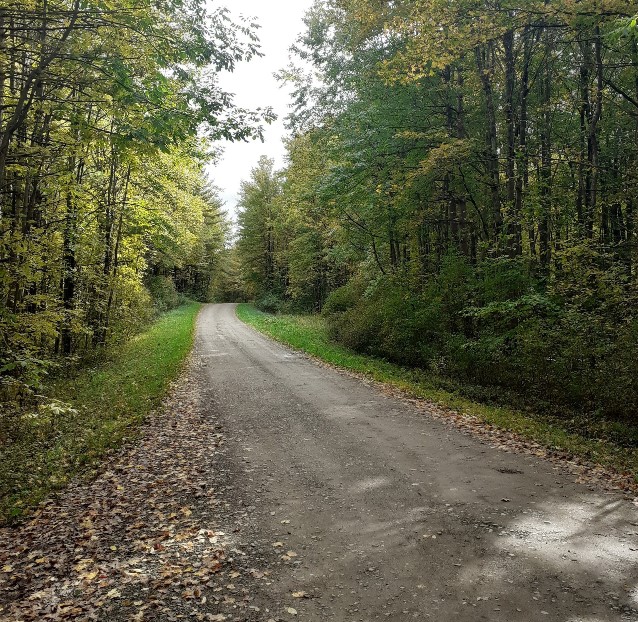
Many Travel Routes
The main point to most protected land is to also be seen by everyone. To allow this each contains a web of trails and access roads which often spread into the deepest acres. While walking or riding pack animals will get you in deeper, sometimes you need to get to point B faster, which the major paved and unpaved roads alike will give you the ability to do. The maps that will be available to you will contain mostly the up to date and currently maintained roads and trails, there are many that have been forgotten and overgrown that you can take advantage of if you find them.
Availability of Water
Especially along the East Coast and southern states, it’s not uncommon for a significant body of water to be the crown jewel of a park. From rivers to ponds, there often will be a place for you to fill up your military arctic canteen or wash your clothes. This can also add fish or other aquatic food to your diet if you’re lucky enough.
Cons of the National Park Bug Out
Not an Original Idea
Almost everyone knows where these areas are. Especially the locals. They even have signs along major highways giving people directions in order to raise awareness. There may be a chance you’ll be shoulder-to-shoulder with strangers, which is the last thing you’ll want to happen.
It’s Rugged Terrain
The same rugged landscape will try to keep you from reaching its inner sanctum just as persistently as it will other people. You also can’t bring as much gear as you might need for an extended period of time, unless you have the resources to bring pack animals such as horses or llamas. The more you pack in the more comfortable you’ll be, but the more resources you’ll need to get your stuff into the backcountry. The Western half of the U.S. tends to be much more inhospitable due to the combination of arid desert areas, and intense mountain ranges. You might find yourself in a position where you get stranded in an area devoid of the resources you need.
Not All Lands are Created Equal
Back when public lands were first being established, many people were trying to make a name for themselves all across the United States. Many of the homesteads were established in areas that were extremely hard to grow crops. Many people were forced to sell their land back to the government and move on. Many of these foreclosures are what make up much of the places I’m referring to. While many are good for hunting and exploring, they are all but useless in establishing a homestead. There are many places where this is not the case, but it would do you well to add researching the origins of the area to your preparation list.
Further Considerations
When plotting out our delusions of grandeur, we often forget that it’s not just ourselves that we have to worry about when all Hell breaks loose. It can be easy to forget that we have friends and family that will rely on us and our leadership to help them make it through the worst of it. Add that on top of the thousands, not hundreds, of other families that have the same idea that you have.
Did you think of how you’re going to get all those people, and the supplies needed, down into the backwoods? What happens if you’re not the first person on the highway and get stuck in the middle of standstill cars? It can be a long walk to get out of the city, and standing between you and “the promised lands” are the rural people that know the lay of the land much better than you, and won’t be looking to take in refugees.
Even by the time you make it through all of the initial obstacles, a primal competition of nature’s bounty will ensue. You’ll be fighting tooth and nail for every available bit of food and water, which will quickly run out without the structures of modern conservation.
It’s not all doom and gloom however. Someone is going to survive, like a nationwide gladiator style battle royal, there will be a victor. It’s up to you to be that person. It’s certainly worth being proactive in honing your skills and abilities.
East versus West
Now we don’t all have the same living conditions. Some of us live along the major cities on the coasts, some of us are those rural people already a step ahead. Each one of our positions is different and leads us to have different strategies and escape routes. One of these major distinctions is which coast you reside on.
The East
The first major concern about the East Coast is that the population is significantly denser than in the West. There are simply more people to compete with, as well as more cities and suburban areas to travel through. While the abundant infrastructure leads to easier travel over terrain that normally wouldn’t be ideal to travel on, it only takes a single fallen tree or parked cars to impede your traveling.
There’s also generally more easily accessible water in the East, the wetter climate of the East lends to finding water much easier than the more arid areas of the West.
This also leads to more abundant resources, from timber to denser wildlife populations. In comparison the East is much richer for the kinds of things that you would need for when the world collapses.
The West
There is a lot more open land in the west. There will be significantly more room for people to spread out into. But, excluding the northwestern states, there will be even more competition surrounding sources of water. Even a simple glance at Google maps will show you the difference in terrain and biome characteristics of the two coasts. If you know where to look, and how to get around, the West can be just as abundant to your needs as anywhere else, it just takes a lot more work to get to those resources. It makes you appreciate the early settlers of these areas a little bit more when you think of overcoming these obstacles personally.
The Northwest however, (especially Oregon and Washington), are very similar to the East. At least when it comes to abundance of water and plant growth. The other factor is that most of the major cities and populated areas are centered around the major water sources. While modern technology allows us to have access to water even while being miles away from lakes and rivers, once no one is there to keep things running, people are going to have to congregate around any water they can. While game is abundant today, once people start taking animals off the landscape it will be harder and harder to find them as the pressure will cause them to become more and more skittish.
The West is certainly a much more rugged place to try and bug out to, but the tradeoff will be that you are less likely to run into other people, as well as being able to see further distances enabling you to ascertain danger earlier than in the claustrophobic East.
Which National Park Should You Pick?
Now when looking for an area to plan to bug out to, there will be a lot of circumstances and situations that you’ll be put into that you could never in your entire life be prepared for. So even if you follow your game plan to the letter, and have all the supplies you think you need, anything can happen. Even if you do get to an area where you’ll be away from other people it doesn’t mean you’ve necessarily made it. It will be a battle each day to survive.
While you can’t eliminate every potential mishap or tribulation, your choices and preparation can help you stay on top.
I could go into a large list of potential areas that you could go to but I think that it would be more worth your time if I helped you choose the best site for your sanctuary.
Step 1: Distance
How far do you need to travel to escape the chaotic suburban sprawl? Whether you track it in total miles, or in how many hours it takes you to cover that distance, you need to also keep in mind how far away ANY civilization is from your destination, not just from your starting point. There are areas that take me two hours to drive to, but they are only thirty minutes away from several medium sized towns, making it a not so ideal for this situation.
Related article: How to Bug Out of a City
Considering how easy it is to travel across the terrain, the distance from your entry point to your ultimate destination can be smaller in rugged areas than on flat land. Intersecting roads and access trails also make it easier to get deeper into rugged areas, look at your location and how far is it from the main road or trail? How easy is that trail to navigate? Like I stated earlier, people are not usually going to go very deep into areas that will require a lot of energy until they absolutely must.
The further you are from people, the better.
Step 2: Resources
Simply put, where’s the water? Do you have the means to purify water? What are you going to eat? Can you rely on hunting? What kind of shelter does the terrain provide?
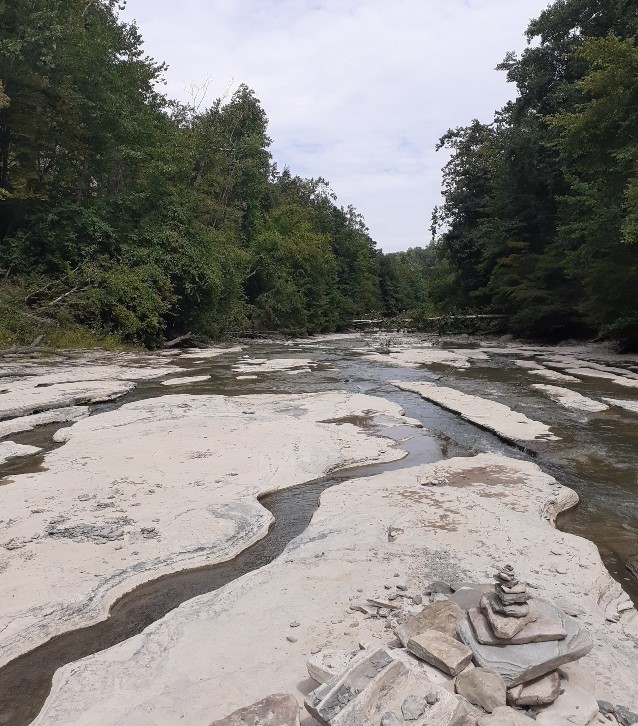
Answering these questions is critical, especially if you’re going to be in a single area for an extended period of time. Some areas are better suited to support you and your loved ones than others. You may be able to hold your own on minimal food and water, but once you throw more people that you’ll have to help provide for, things can get hairy quick. What if you bring pets or pack animals? Will you be able to care for your horses/llamas/mules indefinitely in the backcountry? Finding the most abundant and fertile areas will only increase your chances of surviving.
Step 3: Travel Routes
Not only how are you going to get there, but also how will you get around once you arrive? Highways are great, until they’re blocked, either by other cars or blockades. Side roads can be a good plan B, but can be just as treacherous as main roads. Are you prepared to walk? Keep in mind also how you’re going to carry everything you need. Vehicles are great for both speed and storage, but they’re only as useful as long as the roads are. Pack animals are a good second option, but they also require extra resources and equipment to be useful.
The simplest option is taking as much as you can on your back, but this is far from ideal for so many reasons. Then when you get to your scouted location, is the family camper going to be able to make it up the plateau? If you need to travel, will the way you made it in be available to get you out all times of the year?
Balance out the need to keep people at a distance and your mobility. There may come a time where you need to get out of dodge and start over elsewhere.
Step 4: What are You Capable of?
Leading into the final set of decisions, which all depend on the set of skills and resources you have available to you. Are you able to survive in the backcountry? Will you be able to obtain food and water? What would you do if your shelter fell apart in the middle of a blizzard? Will your gear hold up? You may not need the physical conditioning of a Navy SEAL, but you need to be fit.
Now no amount of gear will ensure your survival if you can’t use it properly. The skills and intuition needed to keep yourself not only alive, but relatively healthy do not come to you overnight. I myself have been guilty of assuming that just because I’ve watched the same YouTube video twenty times, I would be able to take what I watched and put into use when I was out in the woods. Sometimes it’s worked, but never for anything that would keep death’s icy grip from taking me to my maker.
As any survival article will tell you, practice your skills. Sharpen your instincts. There’s a reason it’s a cliché.
Bonus Thought: Use Public Lands to Sharpen Your Skills
It doesn’t take month long solo expeditions into designated wilderness areas with nothing but a loincloth and a knife to make yourself into a hardened bushcraft expert. Hardly any of us have that kind of time. Chances are there’s a parcel of land much closer to you that you can utilize that isn’t a massive national park or your backyard.
Most states have acres upon acres of smaller state parks or forests that are available for you to recreate as close to an intense backcountry experience as you can, closer to home. One of my favorites is a “meager” 1,303 acres. While I can’t completely shut out the surrounding signs of people, the skills I used to keep myself warm and dry were exactly the same as I used in my wilderness expeditions.
Be creative when looking for places to build your experiences, sometimes there are places that are only accessible to you if you have landowner permission. Search your State Agency’s website for these areas and don’t be afraid to reach out to people, you never know what you’re going to find.
Are National Parks Worth Your Time?
There’s no sugar coating it. If there were to be a complete collapse of everything that governs us and keeps things running as we know it, it will be the worst day of our lives. It will be every man/family for themselves. Decisions will be made, most of them will be mistakes, each of them will haunt us one way or another. It will be anything but easy, but it will be possible.
If you were to ask me if national parks are good bug out locations, it’s like anything else in life, it depends. For me, they are. But that only makes sense because of the skills and experiences I have; this might not be the same for you. Take your time and really test yourself and consider all the angles. If you’re ready for what both mother nature and man can throw your way, it just might pan out for you.
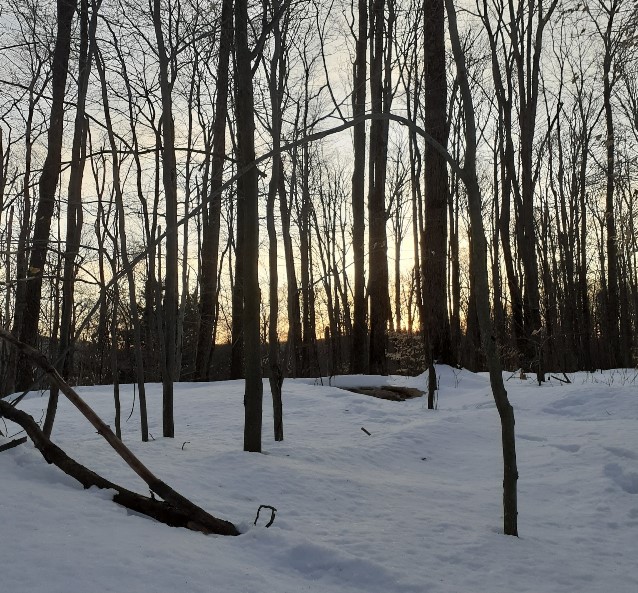
Further Reading
Want to explore more information on bugging out? We recommend the following books:
- Stewart, Creek (Author)
- English (Publication Language)
- 208 Pages - 05/18/2012 (Publication Date) - Krause Publications (Publisher)
- Yao MD, Joseph (Author)
- English (Publication Language)
- 413 Pages - 01/18/2021 (Publication Date) - Independently published (Publisher)
- Williams, Scott B (Author)
- English (Publication Language)
- 312 Pages - 12/15/2020 (Publication Date) - Ulysses Press (Publisher)




4 comments
National Parks are like the shopping malls of outdoors. Everyone and their dog will bug out to them when SHTF. And the roads will be parking lots. You would be much better off almost anywhere else. While national parks are appealing for those who don’t live close to them, in reality there are more better options than not.
nothing but an extension of the “Jeremiah Johnson fantasy bug-out >> “I’ll live off the land” – most will be like the first TV show Alone contestant calling for the boat to rescue them from the big bad woods ..
Let me first commend the author for a very thoughtful piece. I believe he makes some good points and is playing Devil’s advocate to get people thinking.
The best bug-out, we would all agree, is a an isolated and self-sufficient homestead. It took me a few years, but I acquired it. I’ve got a shack with solar, a wood stove, garden, and a spring. It is a piece of land amid a national forest that is preserved through a grandfather clause. I was lucky to get it at a good price a few years back. But what would I do if I didn’t have it?
I agree with the replies saying a national park bug-out would be a Jeremiah Johnson fantasy. J.J. himself went into town to trade for things he couldn’t acquire on his own. Fugitive Claude Dallas, despite his purported expert woodcraft, was caught at a 7-11. Eric Rudolph, the Olympic Park bomber, was similarly caught when he was dumpster diving behind a Save-A-Lot. It is a fantasy to think one person, much more a group, can drive an RV to a campground and become Swiss Family Robinson.
But, again, what if you don’t have a deed-in-hand retreat location already waiting for you? I would say national forests (as opposed to national parks) are a good alternative. But it is necessary to preposition supplies.
I’m in the Ozark National Forest. A vast area with seldom-used trails and decent water resources. If I were to plan a bug-out there, I would start caching supplies in advance. I’d scout a location far off the main trail and start hiking in each weekend with the things I’d need for a long term stay. The proverbial beans, bullets, and band-aids. But also tools. Try to carry about thirty pounds of gear each weekend to add to the cache. Naturally, all items need to be packed properly to prevent rust, spoilage, or animal plundering. That part is really not hard to do. The tough part is keeping it hidden, just in case some rare hiker comes across your area.
My chosen method for hiding the cache is not a simple hole in the ground. Instead, I take a couple of hydraulic jacks and prop up a big slab of rock. Then, shoring it up so I don’t get squashed to jelly, I shovel out a depression beneath. That is where the packaged supplies go. The rock is then lowered and efforts are made to wipe out foot prints and other signs of activity.
In a few trips you can have all the essentials for long-term survival on location. It’s important that you locate your cache on high ground to minimize moisture. Also, take different routes to your spot so you don’t create a trail that will lead others to your cache.
If bug-out day comes, head there with your regular bag and set up a tent camp. Maybe the emergency will end before you need to start homesteading. But if it doesn’t, you are equipped for the long-haul.
What you store in the cache is up to you. But I use these parameters.
I need, at minimum, enough dry food (beans, rice, flour, grits, dried meat and dried fruit) to last until I’ve got some kind of garden producing. Naturally, I need some garden seeds.
I need basic tools to build a real shelter. Axe, saw, hammer, shovel, long nails, rope, and a pulley. Naturally, you don’t build a cabin if the emergency is going to end in a month and the Forest Rangers will be coming by to write a citation.
I need basic cooking gear, water purification tabs or equivalent, lots of first aid gear, and extra clothing.
Naturally, a supply of ammo for each firearm.
A hand cranked radio to monitor news from the “outside” world.
It’s a hell of a lot of work. I can tell you, because I’ve done it. I have such a cache as a fall back position in case I need it. In a grid down situation it will become my personal Costco. I presently visit it every few months and rotate and refresh much of the food. My bug-out partners each have a similar cache.
And that may be the most important thing; partners. You just won’t make it alone. A broken ankle can leave you dying on a mountainside without someone to help you back to camp. A case of food poisoning can kill you if you don’t have someone help you keep hydrated and medicated. So many ways a long person can die without assistance.
Finally, I’ll do a little preaching. A personal bug-out location is within reach of most people. A few acres in a rural area is all you may need. That kind of land is cheap in my part of the world. Yet many of my friends say they can’t afford it. They drive 40-thousand dollar trucks. They own bass boats. They have season tickets for their favorite sports franchise. They vacation on the Gulf every summer. But they say they can’t drop a few thousand dollars on a place they know could save their tails in an emergency.
Preparation is often just about having one’s priorities right. But I know, at least on this site, I’m preaching to the choir about that part.
I wish I could edit. I meant to say “lone” person, not “long person”. I assure you I was not trying to make an immodest remark about my manly endowment.